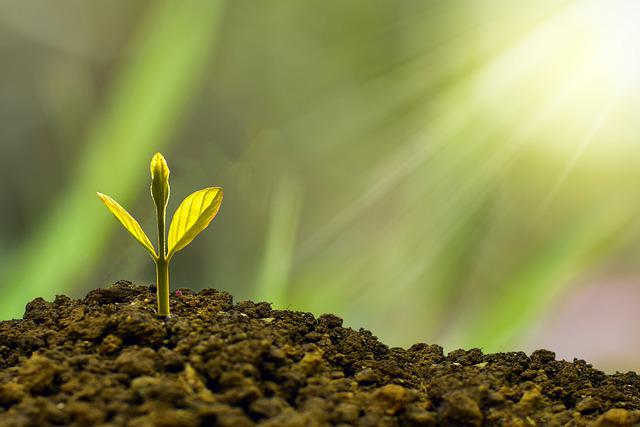November 28, 2022
By Robin Saluoks, Co-Founder and CEO, eAgronom
Agriculture is going places. The traditionally very low-tech sector that has been lagging behind on digital transformation saw agtech VC deals jump from $6.5 billion in 2020 to $11.4 billion in 2021. It’s now undeniably a hotbed for investment and innovation. The reasons for this are manifold: the realities of the climate crisis hitting home, wars and natural disasters destroying livelihoods across the globe threatening food security, and the global finance sector being under pressure to clean up portfolios and promote sustainable futures are but a few of them.
On this basis, despite an overall challenging macroeconomic outlook, investors are set to keep their spotlight on the market. Operating in the midst of this buzzing industry, the following are my predictions on why the sector will receive an uplift in 2023, and go from strength to strength.
Enabling Farmers is Key to Sustainable Future
From developments in precision agriculture to robotics to tackle labor shortages, advances in vertical farming, and improved water management solutions and much more – every area of the agricultural and food industry appears to be receiving a scientific and technological makeover.
And it is true that agriculture is an industry in dire need of innovation and cleaning up its act. It’s the cause of 10 percent of total greenhouse gas emissions in the U.S. and the EU alone, and is responsible for inexcusable damage to the environment and wildlife. Meanwhile, the Sustainable Development goal to end world hunger by 2030 set by the UN in 2015 has never felt more out of reach with nearly 193 million people acutely food insecure, 20 percent more than in 2020. Indeed, the recent OECD-FAO Agricultural Outlook 2022-2031 suggested that to reach the Zero Hunger target while reducing direct GHG by 6 percent, overall agricultural productivity would need to increase by 28 percent over the next decade.
While every part of the agricultural value chain is crying out for modernization, the reality is that many farmers are struggling to keep the lights on, let alone make investments to future-proof their farms. Due to the cyclical nature of agriculture, many farmers require some sort of financing to tide them over until the next harvest. According to the World Bank, half the world’s farmers are unbanked. That is 440 million farmers. Despite common misconceptions, around 95 percent of global farms are smallhold with less than five hectares of land, collectively producing 80 percent of the food for some regions, including Asia and sub-Saharan Africa.
Although agricultural challenges vary immensely by geography, access to finance is a universal problem for farmers across the world. I personally speak to farmers every day, and the will to make positive changes is overwhelmingly there, but the capital to bring about such a transformation is often not. While development of innovative agritech needs to continue apace, in 2023 the market has to concurrently work on breaking down the barriers preventing farmers from embracing sustainability. In fact, the emergence of novel mechanisms for agricultural finance is critical to bring about the much-needed boost for the uptake of new technologies to modernize farms.
Novel Agrifinance Mechanisms Foster Positive Change
I believe 2023 will be the year when we will be able to bridge the gap and complete the sustainable ecosystem circle in agriculture thanks to the proliferation of new finance mechanisms for farmers. Exciting trends are emerging that address the differing needs of farmers in communities across the world.
Web3: New Kid on the Block Empowering Developing Agrimarkets
For unbanked communities in developing regions, a smartphone is a game-changer as it provides farmers with the opportunity to access financial services. This includes using cryptocurrency platforms to get microloans and being able to pay or be paid for goods and services instantly, directly, and without a middle man.
With many communities depending on their local farmers for all their food needs, Web3-powered developments have real potential to improve livelihoods. Providing better access to broadband and cellular networks in rural areas is therefore of crucial importance to farmers in developing countries.
Progress is slow and steady, with only 28 percent of the sub-Saharan population having internet access in 2020. However, with the war in Ukraine, and the worsening macroeconomic outlook having the biggest impact on poorer communities, the international development communities will continue to push for greater connectivity over the coming years with major investment and innovation needed to transform the livelihoods of those most in need.
Insurance Offers Security
One of the many reasons why it is so difficult for financial institutions to fund farmers is the difficulty to assess risks due to the unpredictable nature of the agricultural business. This is why insurance is another problem area for many farmers. Unfortunately, poorer countries are already disproportionately affected by climate change, and an extreme weather event can have devastating effects on the livelihoods of farmers and local communities with no available safety net.
This is an area where blockchain can really shine, however. Clean and open digital data from weather stations and farms on blockchain that cannot be manipulated form the basis of Web3-powered index insurance. This allows claims to be processed quickly with automated payouts. Farmers are therefore able to better manage risks and become less vulnerable to the adverse effects of weather events, equipment failure and other problems, and in time will be able to look towards improving their processes above and beyond constant firefighting.
Boost in Green Loans from Traditional Financial Institutions
While farmers in developed economies do not face the same challenges as their counterparts in poorer regions, access to finance remains a challenge. In many parts of Europe, for example, those farmers unable to access finance through traditional institutions make agreements with their agricultural input suppliers regarding financing options at inordinate rates. However, looming regulations around sustainable investments, including the upcoming EU Taxonomy, is putting pressure on financial institutions to invest according to more stringent ESG principles. With two-thirds of the European economy being financed by banks, banks have a major responsibility in the transition to a more sustainable future.
A developing trend is to offer farmers more favorable lending terms for moving towards sustainable practices and taking steps to counter climate change. These so-called sustainability-linked loans are tied to a set of requirements that farmers have to meet during the term of the loan. Technology is provided to the farmer for measuring and verifying the changes being made and the effects they have. For sustainable farming to become mainstream, it has to be short-term profitable. Green loans are a great way to initiate change, and as such, we are going to see a lot more movement over the next year.
Carbon Offsetting Industry Coming Good: Pre-Paying Farmers to Facilitate Real Action
While many farmers struggle to access finance to tie them over to the next season, climate change and population growth mean it’s absolutely crucial for the agricultural sector to have the ability, necessary tools, and funds to adapt to the changing climate and resource scarcity. This means huge investments will have to be directed towards the agricultural sector to enable this transition. The World Bank talks about a requirement of $80 billion of annual investments.
In the short-term, funding for agricultural sustainability could in part come from private companies looking to offset residual emissions in their quest to reach NetZero. Agriculture is an industry incredibly well-suited to be part of the carbon offset ecosystem. Soils are the largest carbon sink outside oceans, and sequestering carbon in agricultural soil via photosynthesis is a key natural means to fight climate change. Carbon programs that provide pre-financing of carbon credits enable farmers to invest in the long-term future rather than season-to-season, whilst providing them an extra revenue stream without the burden of huge initial capital requirements.
Controversy is following the carbon offsetting industry every step of the way. And rightly so. This is a very new sphere that requires high levels of scrutiny to avoid being abused. However, carbon offsetting should not be dismissed merely as greenwashing; done right, it is able to make a real difference in the fight against climate change. The industry has come a long way with methodologies around measurement and verification improving every day, in particular through the help of reputed organizations such as Verra. Carbon offsetting is an important part of the mix to make agriculture more sustainable, and carbon credit prepayment initiatives are set to boost climate-smart farming in 2023.
2023 is the Year Finance will Boost Agriculture
For years farmers have been lectured about the need to move to sustainable and regenerative farming practices and cut emissions. And for years, they have been held back by a lack of funds to make meaningful changes to their practices. With new finance mechanisms in place, the stage is set to boost demand for agritech solutions to help farmers on their sustainable and regenerative farming journey in 2023 and beyond. We have the power to fight climate change and feed the growing population; with the help of finance, we will have the means to achieve it.
About the Author
Robin Saluoks is the co-founder and CEO of eAgronom, an agtech startup transforming the voluntary carbon offset market and accelerating the transition to net-zero farming. Founded in Estonia in 2016, eAgronom’s farm management software, AI, and remote sensing technologies allow farmers to get paid for creating carbon credits and access lower interest rates by adopting sustainable processes. eAgronom’s product suite measures, monitors, and verifies on-farm carbon footprints to create high-quality carbon credits for corporate buyers. The startup has $6 million in backing from investors and has more than 1,500 paying farm customers covering over a million hectares of land across Europe.
*The content put forth by Global AgInvesting News and its parent company HighQuest Partners is intended to be used and must be used for informational purposes only. All information or other material herein is not to be construed as legal, tax, investment, financial, or other advice. Global AgInvesting and HighQuest Partners are not a fiduciary in any manner, and the reader assumes the sole responsibility of evaluating the merits and risks associated with the use of any information or other content on this site.

Let GAI News inform your engagement in the agriculture sector.
GAI News provides crucial and timely news and insight to help you stay ahead of critical agricultural trends through free delivery of two weekly newsletters, Ag Investing Weekly and AgTech Intel.





